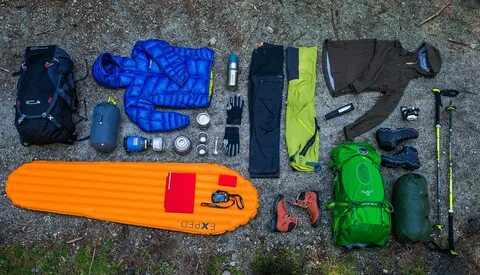
The global hiking gear and equipment market is experiencing significant growth, propelled by a surge in outdoor recreational activities and a heightened focus on health and wellness. As of 2024, the market was valued at approximately USD 5.97 billion and is projected to expand at a compound annual growth rate (CAGR) of 8.4% from 2025 to 2030. This growth trajectory underscores the increasing consumer interest in hiking and related outdoor pursuits.
Market Drivers
1. Surge in Outdoor Recreation
The post-pandemic era has witnessed a remarkable shift towards outdoor activities. In the United States, participation in hiking increased by 11.5% in 2022, with 54.4 million individuals engaging in the activity. This trend is mirrored globally, with countries like China experiencing a 40% growth in hiking-related sales, particularly in brands such as Arc'teryx and Salomon. This surge is attributed to a growing appreciation for nature, health benefits, and a desire for experiential leisure activities.
2. Health and Wellness Focus
There's a growing consumer emphasis on health and wellness, with many individuals seeking activities that promote physical fitness and mental well-being. Hiking, being accessible and versatile, aligns with this trend, further driving the demand for related gear and equipment.
3. Technological Advancements
Innovations in hiking gear, such as lightweight materials, enhanced durability, and smart equipment integration, are attracting tech-savvy consumers. Features like GPS-enabled devices, wearable health monitors, and weather-resistant apparel are becoming standard, enhancing the overall hiking experience.
Market Challenges
1. Supply Chain Disruptions
The hiking gear industry faces challenges related to supply chain disruptions, impacting product availability and pricing. Factors such as trade tensions and manufacturing delays contribute to these issues, affecting both retailers and consumers.
2. Economic Pressures
Economic fluctuations influence consumer spending patterns. For instance, REI, a major outdoor retailer, reported a net loss of $311 million in 2023, citing high operational costs and shifting market dynamics. Such financial strains can lead to reduced product offerings and store closures, affecting consumer access to hiking gear.
3. Environmental Concerns
As consumers become more environmentally conscious, there's increased demand for sustainable and eco-friendly hiking products. Manufacturers are under pressure to adopt sustainable practices, source ethical materials, and minimize environmental footprints, all while maintaining product performance and affordability.
Market Opportunities
1. E-commerce Expansion
The rise of online shopping presents significant opportunities for hiking gear brands. E-commerce platforms enable brands to reach a global audience, offer diverse product ranges, and provide personalized shopping experiences. The convenience of online shopping, coupled with detailed product information and reviews, is attracting a broader customer base.
2. Product Diversification
There's a growing market for specialized hiking gear catering to various demographics, including women, children, and seniors. Developing products that address the unique needs of these groups can open new revenue streams and foster brand loyalty.
3. Collaborations and Partnerships
Strategic collaborations between brands and outdoor adventure organizations can enhance product credibility and visibility. Partnerships for co-branded merchandise, sponsored events, and joint marketing campaigns can drive consumer engagement and sales.
Regional Insights
North America
In North America, the hiking gear market is experiencing steady growth, with a projected CAGR of 4.2% from 2024 to 2030. The U.S. market, in particular, benefits from a strong culture of outdoor recreation and significant consumer spending on hiking equipment. However, retailers face challenges such as economic volatility and changing consumer preferences, necessitating adaptive strategies to maintain market share.
Asia-Pacific
The Asia-Pacific region is emerging as a significant market for hiking gear, driven by increasing urbanization, rising disposable incomes, and a growing interest in outdoor activities. Countries like China and India are witnessing rapid growth in hiking participation, leading to increased demand for specialized equipment. This trend presents opportunities for brands to introduce region-specific products and expand their market presence.
Competitive Landscape
The hiking gear market is characterized by the presence of both established and emerging players. Companies like The North Face, Columbia Sportswear, and Black Diamond dominate the market, offering a wide range of products. However, new entrants focusing on innovative designs, sustainable materials, and niche markets are gaining traction, contributing to a dynamic and competitive landscape.
Future Outlook
The hiking gear and equipment market is poised for continued growth, driven by evolving consumer preferences, technological advancements, and strategic market expansions. To capitalize on emerging opportunities, brands must focus on:
Innovation: Investing in research and development to create products that meet the evolving needs of consumers, such as integrating wearable technology or developing sustainable materials.
Sustainability: Adopting eco-friendly manufacturing processes and materials to appeal to environmentally conscious consumers and comply with global sustainability standards.
Consumer Engagement: Building strong relationships with consumers through personalized marketing, community engagement, and exceptional customer service to foster brand loyalty.
Conclusion
The hiking gear and equipment market is at a pivotal juncture, influenced by a confluence of factors including technological innovation, environmental considerations, and shifting consumer behaviors. Brands that navigate these dynamics effectively, while addressing challenges and seizing opportunities, are well-positioned to thrive in this evolving market landscape. As consumers continue to seek products that enhance their outdoor experiences, the demand for high-quality, innovative, and sustainable hiking gear is set to rise, ensuring a robust market outlook in the years to come.




















Write a comment ...